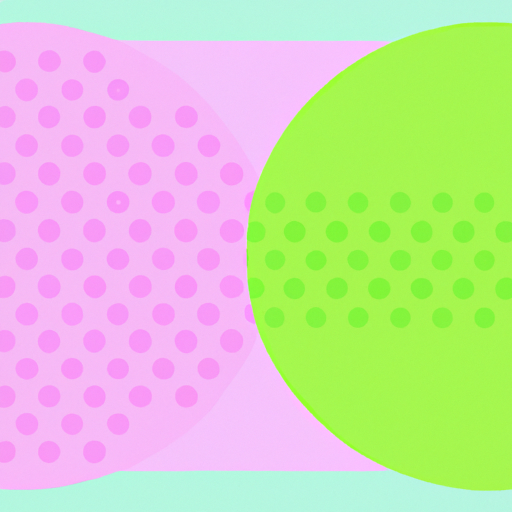
-
Table of Contents
- Minimalist Magic: Less is More in Graphic Design
- The Principles of Minimalist Design
- The Benefits of Minimalist Design
- Minimalism in Different Contexts
- Branding
- Web Design
- Print Design
- Case Studies: Minimalism in Action
- Case Study 1: Apple
- Case Study 2: Airbnb
- Statistics on Minimalist Design
- Summary
Minimalist Magic: Less is More in Graphic Design

Graphic design is a powerful tool that can communicate messages, evoke emotions, and captivate audiences. In a world filled with visual noise, minimalist design has emerged as a popular and effective approach. By stripping away unnecessary elements and focusing on simplicity, minimalist design creates a visual impact that is both elegant and powerful. In this article, we will explore the principles of minimalist design, its benefits, and how it can be applied in various contexts.
The Principles of Minimalist Design
Minimalist design is guided by a set of principles that emphasize simplicity, clarity, and functionality. These principles help designers create visually appealing and effective designs. Here are some key principles of minimalist design:
- Simplicity: Minimalist design aims to simplify complex ideas or concepts by removing unnecessary elements. It focuses on the essential elements that convey the intended message.
- Whitespace: Whitespace, also known as negative space, is the empty space between elements in a design. It helps create a sense of balance, clarity, and visual hierarchy.
- Typography: Minimalist design often utilizes clean and simple typography. Sans-serif fonts are commonly used to enhance readability and maintain a clean aesthetic.
- Color: Minimalist design typically employs a limited color palette. Neutral colors such as white, black, and gray are commonly used to create a sense of simplicity and elegance.
- Grids and Alignment: Minimalist design often relies on grids and precise alignment to create a sense of order and structure. This helps maintain consistency and balance throughout the design.
The Benefits of Minimalist Design
Minimalist design offers numerous benefits that make it a popular choice among designers. Here are some key advantages:
- Clarity: By removing unnecessary elements, minimalist design allows the core message to shine through. It eliminates distractions and ensures that the intended message is clear and easily understood.
- Focus: Minimalist design directs the viewer’s attention to the most important elements of a design. By reducing visual clutter, it helps guide the viewer’s focus and enhances the overall impact of the design.
- Timelessness: Minimalist designs tend to have a timeless quality. By avoiding trendy elements and focusing on simplicity, minimalist designs can remain relevant and visually appealing for years to come.
- Flexibility: Minimalist designs are versatile and can be applied to various contexts. Whether it’s a logo, website, or packaging design, minimalism can adapt to different mediums and effectively communicate the desired message.
- Accessibility: Minimalist design often prioritizes readability and usability. By using clean typography and clear layouts, it ensures that the design is accessible to a wide range of audiences.
Minimalism in Different Contexts
Minimalist design can be applied in various contexts, ranging from branding to web design. Let’s explore how minimalism is utilized in different areas:
Branding
Many successful brands have embraced minimalist design to create memorable and impactful identities. One notable example is the Nike logo, which consists of a simple swoosh symbol. The minimalist approach allows the logo to be easily recognizable and versatile across different mediums.
Web Design
Minimalism has become a popular trend in web design due to its clean and user-friendly nature. Websites like Apple and Google utilize minimalist design to create intuitive and visually appealing user experiences. The use of whitespace, simple typography, and clear navigation enhances usability and ensures a seamless browsing experience.
Print Design
Minimalist design is also prevalent in print design, such as posters and magazine layouts. The use of negative space, limited color palettes, and clean typography helps convey the intended message effectively. For example, the iconic “Just Do It” campaign by Nike utilized minimalist design to create powerful and memorable print advertisements.
Case Studies: Minimalism in Action
Let’s take a closer look at two case studies that demonstrate the power of minimalist design:
Case Study 1: Apple
Apple is renowned for its minimalist design approach, which is evident in its product packaging. The packaging is sleek, simple, and focuses on the product itself. By removing unnecessary elements and using clean typography, Apple creates a sense of elegance and sophistication that aligns with its brand image.
Case Study 2: Airbnb
Airbnb’s website is a prime example of minimalist web design. The homepage features a clean layout with ample whitespace, clear navigation, and high-quality imagery. The minimalist approach enhances the user experience by providing a visually pleasing and intuitive interface.
Statistics on Minimalist Design
Statistics can provide valuable insights into the effectiveness of minimalist design. Here are some compelling statistics:
- According to a study by Google, users form an opinion about a website within 50 milliseconds. Minimalist design can help create a positive first impression and engage users from the moment they land on a website.
- A study by the Nielsen Norman Group found that users prefer simple and minimalist designs. Participants in the study described minimalist websites as “clean,” “professional,” and “trustworthy.”
- In a survey conducted by Adobe, 66% of respondents agreed that a simple design is more appealing than a visually complex one. Minimalist design aligns with the preferences of the majority of users.
Summary
Minimalist design is a powerful approach that emphasizes simplicity, clarity, and functionality. By removing unnecessary elements and focusing on the essential, minimalist design creates visually appealing and effective designs. It offers numerous benefits, including clarity, focus, timelessness, flexibility, and accessibility. Minimalism can be applied in various contexts, such as branding, web design, and print design. Case studies of companies like Apple and Airbnb demonstrate the effectiveness of minimalist design in creating memorable and impactful experiences. Statistics further support the value of minimalist design in engaging users and creating positive impressions. As the saying goes, less is more, and in the world of graphic design, minimalist magic truly shines.
